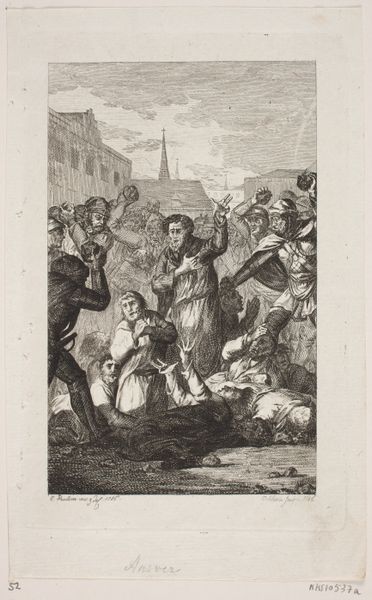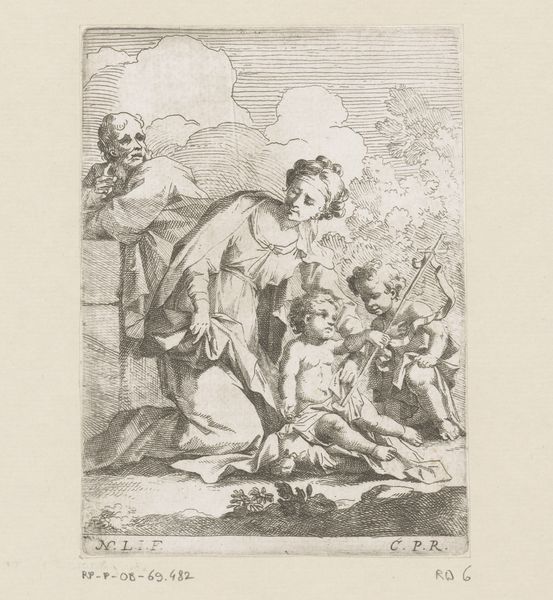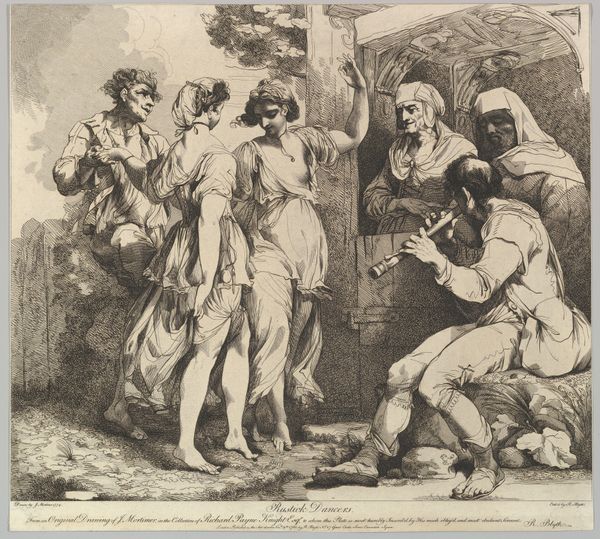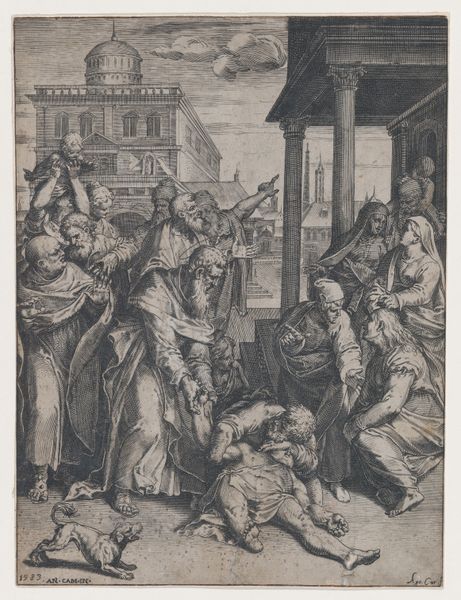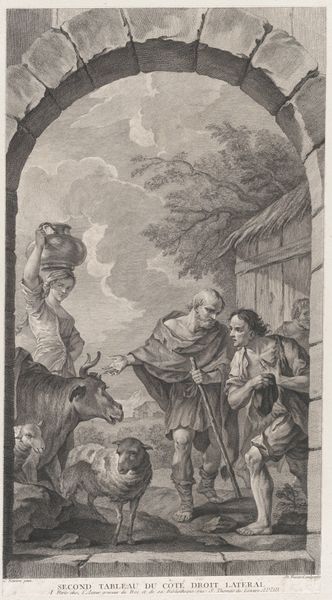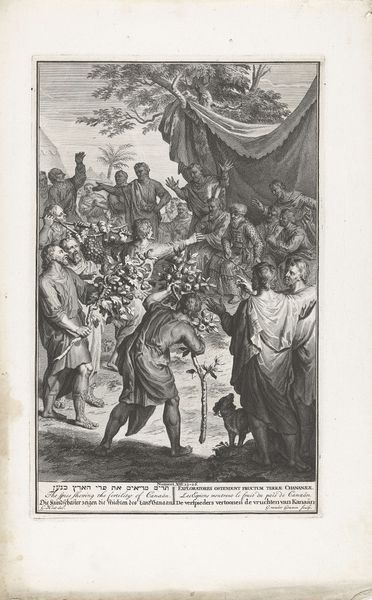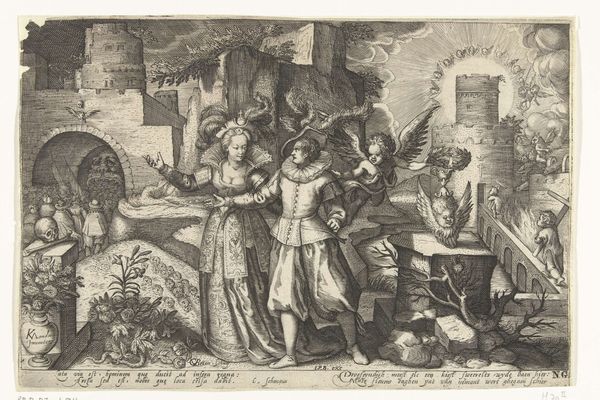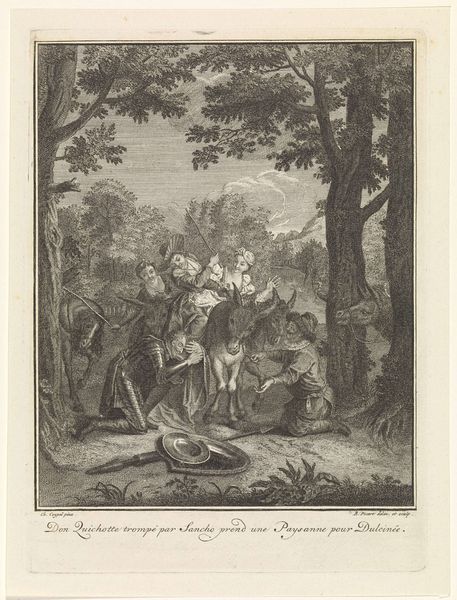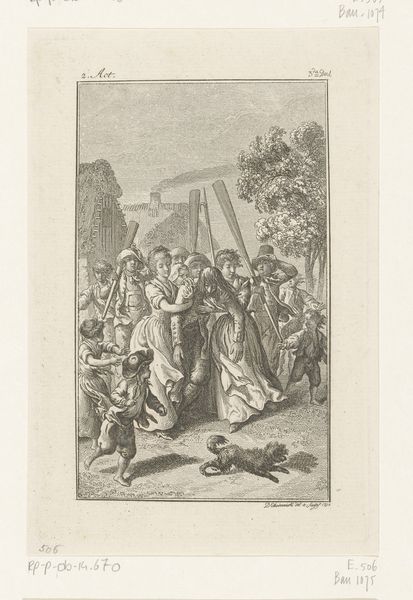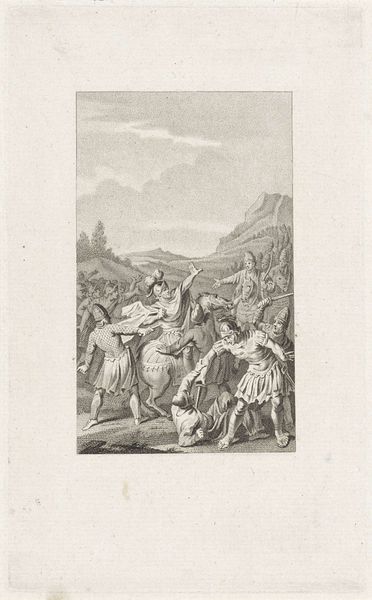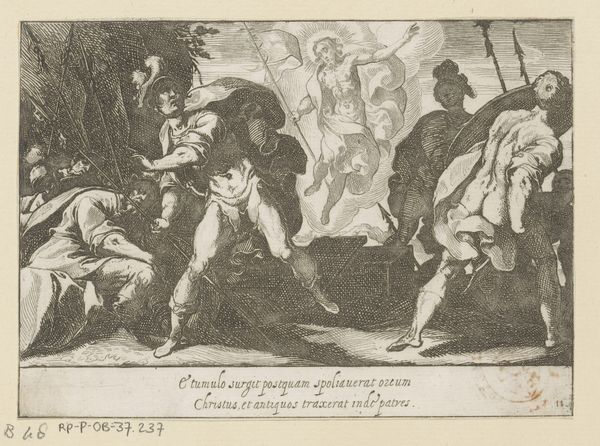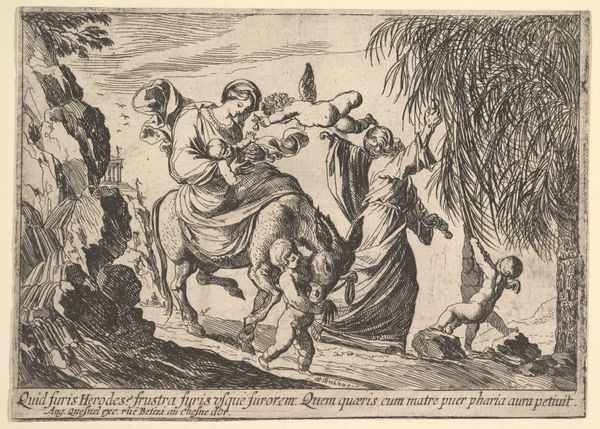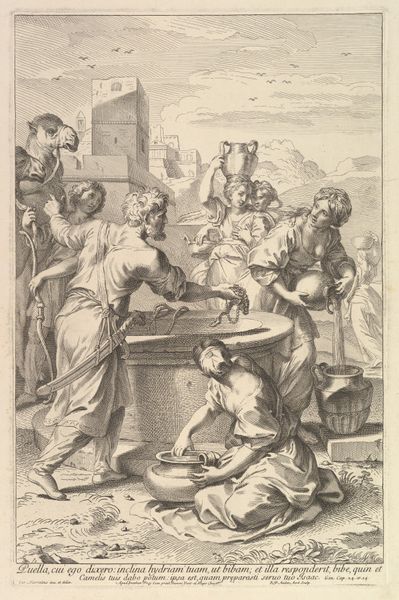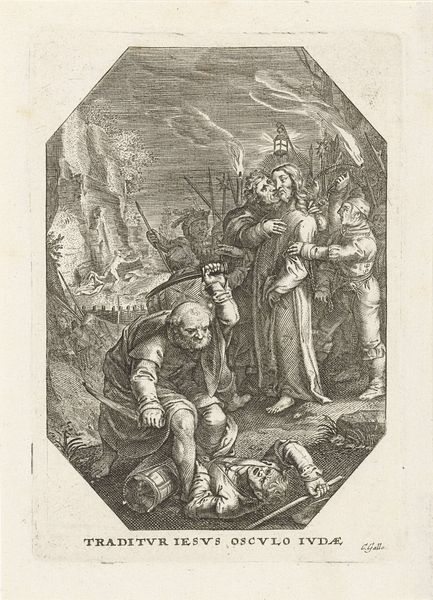
Dimensions: 166 mm (height) x 93 mm (width) (bladmaal)
Curator: What a chilling scene! Georg Christian Schule's engraving "Ansver," created in 1786, plunges us into the heart of conflict. There’s a brutality in its composition and detail. Editor: My initial read is one of visceral outrage. The figures contorted in pain, the aggressive posture of the crowd… It’s not just history; it’s a moment of collective violence captured and crystallized. It evokes profound feelings. Curator: Absolutely. Consider the material reality of the engraving process itself. The labor-intensive carving into the metal plate, each line meticulously etched, reflects the deliberate nature of creating and disseminating this kind of historical narrative to shape the discourse of the time. And it has come to rest at the SMK - Statens Museum for Kunst. Editor: And disseminated with intent, undoubtedly! History painting and prints served very precise roles, right? Schule places us squarely within the religious and political turmoil that shaped 18th-century Europe, echoing centuries of persecution based on faith and difference. I cannot look at such pieces without considering contemporary parallel struggles and collective violence. Curator: Yes, and it is fascinating to look closer at how those meanings are conveyed through materiality. Consider the type of paper used for prints like this one. Often relatively cheap, produced en masse. So while the engraving itself could have demonstrated considerable artisanal skill, the work's intended audience was decidedly diverse, making such imagery accessible beyond the elite. Editor: So accessibility allowed these kinds of visual records of persecution to travel, further cementing ideas of otherness and, tragically, fueling more prejudice! Curator: Precisely. Editor: To consider the long reverberations of those entrenched inequalities forces us to be mindful in contemporary culture. This piece doesn't only teach us of history; it is still teaching us about humanity’s relationship to collective brutality, and how to use the visual arts to promote empathy, and justice. Curator: It makes us conscious about labor and distribution within the context of art. That print material really underlines that historical narrative, which may or may not ring truth, served concrete objectives beyond the artistic merit, such as mobilizing populaces and advancing ideological agendas. Editor: Indeed. A somber, crucial reminder that art doesn't exist in a vacuum, and its making is steeped within very deep power structures. Curator: A perfect way to see it and a warning call too. Thank you. Editor: Thanks to you. It has been enlightening!
Comments
No comments
Be the first to comment and join the conversation on the ultimate creative platform.
